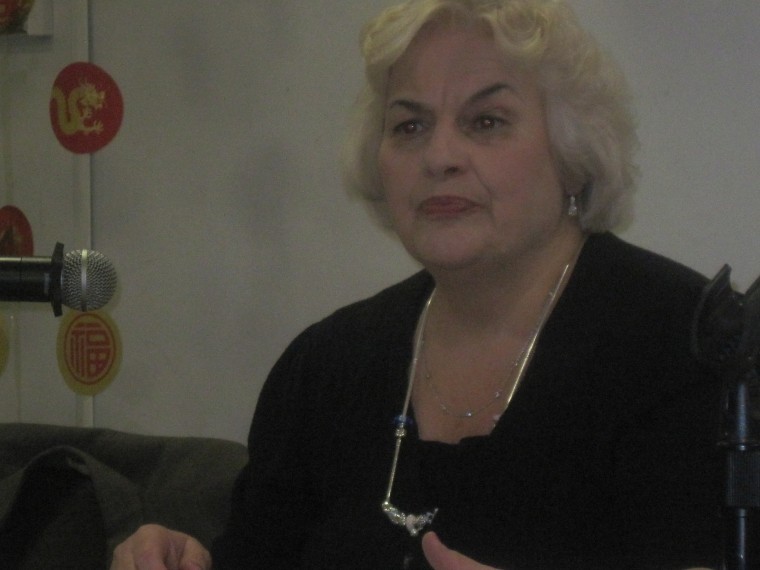As the Herricks School Board wrestles with the alternatives it faces between a “stand-pat” budget that would preserve all district programs and services at a 7.65 percent increase and a 2 percent budget that would make significant cuts in programs and personnel, the only certainty is that the outcome won’t really satisfy anyone.
Parents expressed their concerns politely – but passionately – about prospective cuts to the music programs, the district’s athletic teams and the English as a Second Language program at last Thursday night’s meeting. Senior citizens reminded their neighbors that their concerns about rising property taxes should also be considered. And board members spoke frankly about the compromises that they would likely need to determine.
“There aren’t going to be situations where everybody’s happy. That’s just not going to happen,” board member Dr. Sanjay Jain said. “Any cut will have an impact. The question is the trade-off.”
Jain suggested that residents should form a community coalition to press local legislators to change unfunded mandates, such as the requirement that the district guarantee a seat on a school bus for each student.
A new mandate, the sewer tax being imposed by the county, will add $125,000 to the district budget, according to Helen Costigan, the district’s assistant superintendent of business.
“It’s a cost being shifted by the county to the school districts,” said Herricks Superintendent of Schools John Bierwirth.
Bierwirth said that any deal brokered on the anticipated loss in state education aid would likely favor city schools because of the constituency Democratic Assembly Speaker Sheldon Silver represents.
So the Herricks school district would still likely lose between $1.1 million and $1.3 that Bierwirth had previously projected. If the district “stands pat” on the budget, the 7.65 percent increase on its current $96.5 million budget would push the tax levy between 2 percent and 4 percent above that, according to Bierwirth, who said the 2 percent solution would translate to a 4 percent tax levy hike. A 2 percent increase actually translates to a $5.73 million budget cut. That includes $1.1 million in unemployment costs for the 65 employees who would lose jobs districtwide – 36 of those teachers – along with cutbacks in programs it carries with it.
In response to a question on what budget increases would mean in real dollars, Costigan said a 1 percent increase would mean $965,000 in the budget and $837,000 to the tax levy.
In response to a question about talks with the district teachers. board president Christine Turner would only say the board has engaged in “serious negotiations” with the teachers over the past two weeks, but said she couldn’t divulge any details about those discussions.
“We’re going to try to balance things, but nobody’s going to be entirely happy,” Turner said, echoing Dr. Jain’s comments.
Board member Peter Grisafi said the board didn’t have a sense of what the budget increase should be from the public feedback it had heard thus far. And most comments on Thursday night were about cuts people didn’t want to see.
Resident Christine Michelen said she didn’t want to see the projected 20 percent cut in the district’s sports budget, which would combine 7th and 8th grade teams in some middle school sports and eliminate some junior varsity teams on the high school level, under an overall 2 percent budget increase.
“This is very, very important to a lot of people in this community,” she said, adding that many residents at the previous night’s varsity basketball playoff game had no children on the court.
One resident later suggested that families in the district might pool private contributions to maintain the teams. Bierwirth said doing that, through the existing athletic booster organization or on a “pay to play” basis would likely only be a short-term solution.
The 2 percent solution, as proposed, also would eliminate one of three bands and one of three orchestras from Herricks exemplary music program.
In response to one PTA member’s suggestion that the board simply “shave” something off each line item instead of making wholesale program cuts, Bierwirth said the board had kept most line items static over the past four years as it was.
“We have frozen most areas of the budget,” Bierwirth said.
Resident Neal Maffei, steadying himself on two canes, patiently waited for a microphone and recounted how his children had benefitted from an education in the Herricks district, concluding that the board faced “terrible choices” along with the residents.
“We’re going to have to cut the budget by a considerable amount and it’s going to be painful,” Maffei said, adding, “It may be the way we deal with school budgets for a long time to come.”
After residents dispersed after the budget hearing, the meeting concluded with consideration of a $5,000 study recommended by Bierwirth to find a solution to a problem of insufficient water pressure in the high school fire hydrants. And the study, he said, was just the beginning.
“It’s entirely possible we’ll have to put in a larger pipe,” Bierwirth said, as one board member audibly groaned. “This is why school districts have reserves.”
Bierwirth’s own contribution to the budget crisis was voluntarily decreasing a 4.5 percent increase in his $265,000 annual salary to 1.5 percent in a move affirmed by the board’s approval of his amended contract.
“I think it’s appropriate,” Bierwirth, who took a voluntary wage freeze two years ago, said.
E-mail:rtedesco@theislandnow.com



